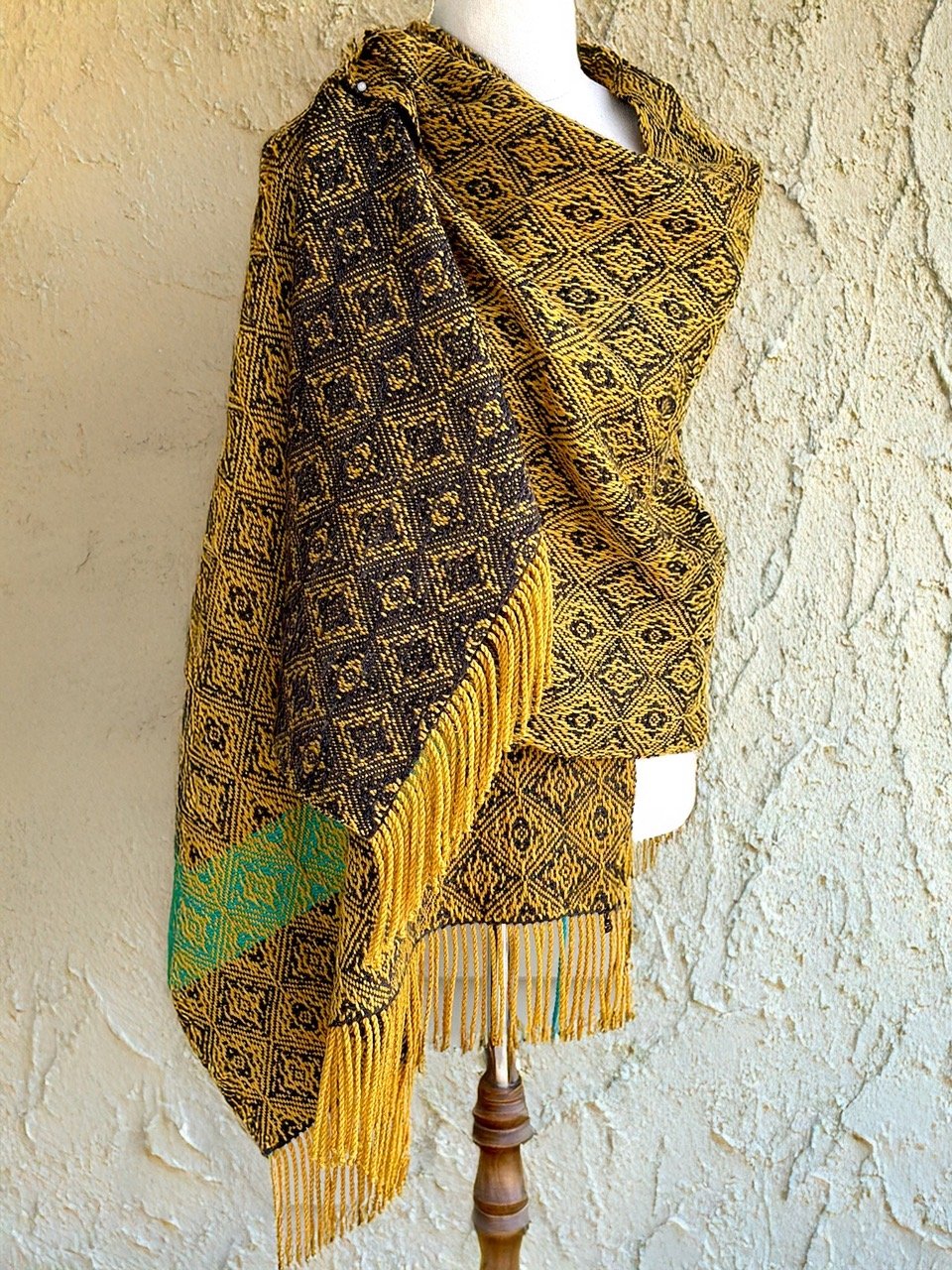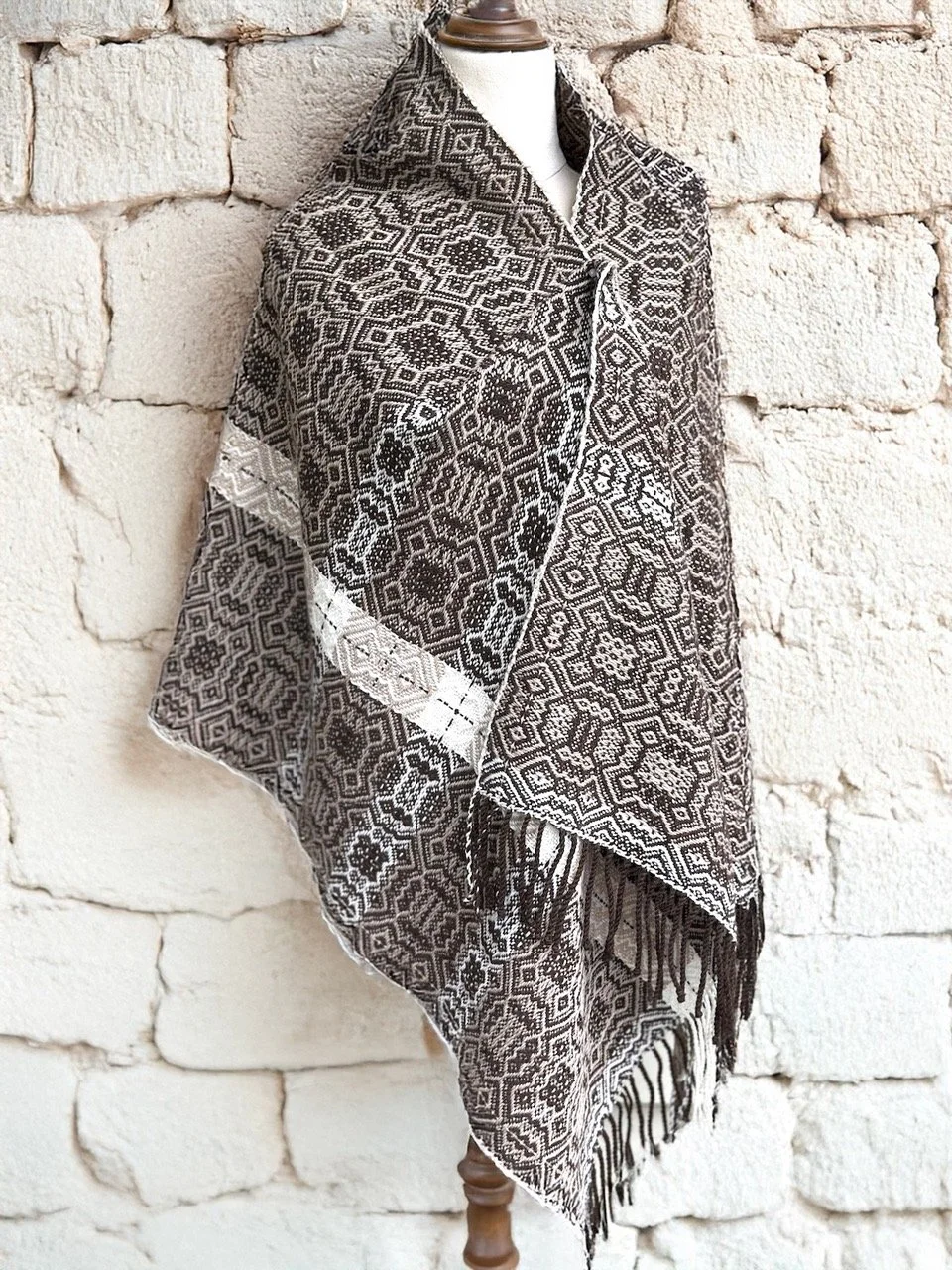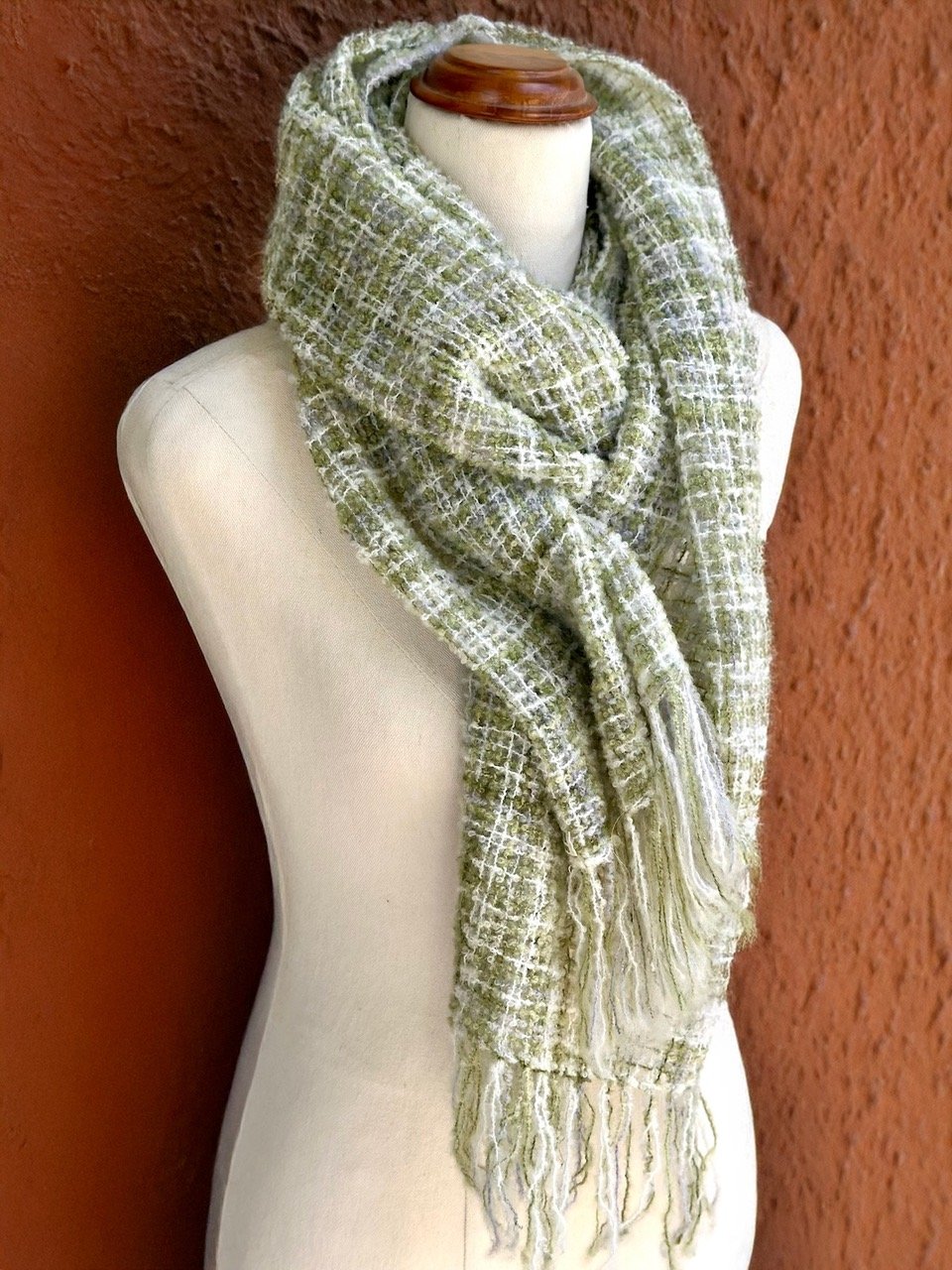FUSION WEAVING
Fusion Weaving is made by PK Maracin in Central Otago. PK is a recipeint of the Creative Fibre NZ’s 2024 National New Weaver award.
Tell us a little about what you make.
I make nice stuff. I weave shawls, wraps and cloth – making accessories and capes you don’t really need, but love to have for your home, to give and for yourself. As a teenager – and influenced by my dear aunt – I realised that accessories are the key to a stylish wardrobe. Clothes and fashion come and go, and are costly to keep up with. But high quality accessories can last you a life time. They immediately lift any outfit, even an old pair of jeans and a t-shirt. Wrap a gorgeous shawl around your shoulders and you’re off.
What was your creative journey like, what led you to being a designer/maker?
I have been surrounded by and drawn to textiles my whole life – learning to sew at a very young age, then learning to knit as a young adult, and learning to weave as an older one. I’ve been wanting to weave forever, but just didn’t know it. When I was 14 I went to Mexico on a Spanish class school trip. While all my classmates were busy buying miniature statues of Aztec gods, I bought a handwoven rug (which I still have).
Compared to many others, though, my previous life had very little to do with fibre arts. Though I did sew during all of those years, my focus and adult corporate life were spent in film. Film has always been my passion from a very young age. Weaving has become my life and appeals to all of me. It combines elements I enjoy doing and have excelled at in the past: analysis, maths, detail work, design, colour work, photography, and sewing. I wish I had discovered weaving earlier in my life, but that was not feasible nor the right time. I am happy that time is now.
How would you describe your design aesthetic/identity and where do you find your inspiration?
I am very much inspired by colour and its combinations – this can be an outfit someone is wearing, beaded jewellery, nature. I also study the historic and current works of indigenous Indian, American and Mexican artisans. Especially in the regions of Rajasthan and West Bengal in India which have a rich almost antique heritage in weaving fine cloth of many colours. Though I do not weave them, I love the feel and look of handwoven rugs and seem to have quite a collection throughout our house.
When I started weaving I thought I would make certain items as that is what I appreciated from other weavers. Then I realised that some structures do not appeal to me, some I don’t enjoy weaving at all, others I enjoy but the outcome is unsatisfying. So over time I developed the cloth I enjoy making and like to produce. I like large widths of cloth as they are versatile. I like capes and ponchos as you can wrap yourself in warmth and glamour. I like working with finer threads as the cloth is more elegant, has better drape. I like working with high quality natural fibres as the end result is immediately lifted.
Then I realised that fine and ultra fine fibres cost more money as they are more precious to produce and you need more of them. High quality possum, merino, silk and linen cost more and some are bought from overseas as that is where the standard is higher. Weaving with fine fibres takes longer, the set-up more time intensive. So I thought: Somebody has to offer items at the higher end, why not me?
Do you have any advice for other makers and budding creatives?
Find what you enjoy creating and keep redefining and polishing that. It may be similar to what others are doing, and it may not. But if it comes from your heart, and has an element of you, then the finished product will echo that. Always put quality first, before any type of quantity. You will never win the “cheapest game”. Don’t make for the market, make for you and hopefully the market will come.
What is the best part about being involved in GUILD?
I am honoured to be a part of GUILD. It is a haven for artisan craftsmanship at many levels and covering many areas. Especially for my work, items need to be touched and tactilely admired. GUILD offers me not only a place to be part of a larger artisan collective, but a brick-and-mortar experience for the customer.
There is a magic and beauty in many handmade artisan pieces. They have a soul because there is human involvement at all stages. Often this isn’t a hobby, it’s a living and a life. The only way this kind of thing continues to exist is when people make an effort to support it - whether it be landlords or customers.






